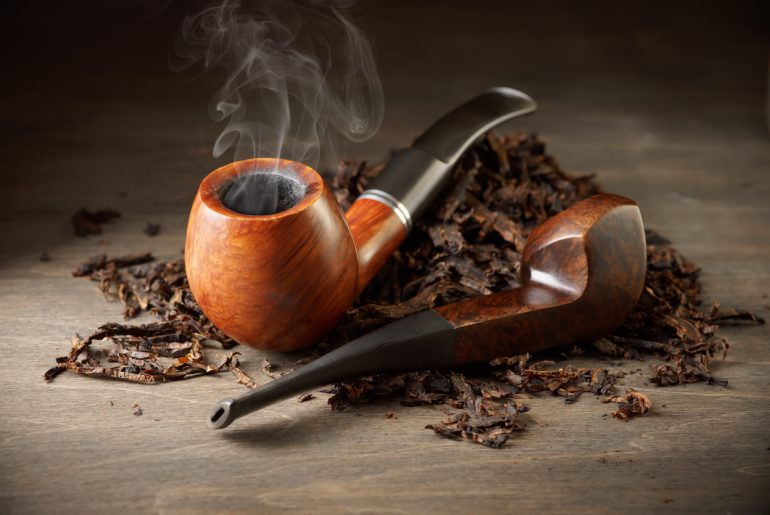As a dedicated pipe smoker, you understand that a well-maintained tobacco pipe is crucial for a consistently enjoyable smoking experience. Regular cleaning not only enhances the flavor of your tobacco but also prolongs the lifespan of your cherished pipe. With a few simple tools and a bit of care, you can ensure your pipe remains pristine. In this guide, we’ll walk you through cleaning and maintaining your tobacco pipe.
Preparing for the Cleaning Session
Let’s start at the beginning. You should only perform cleaning and maintenance on a cool pipe. Never attempt to clean or maintain your pipe directly after a smoking session—this will prevent damage to the bowl and stem.
When cleaning your pipe, it is essential not to damage the bowl. Never knock the bowl against a hard surface, as this can cause it to crack or chip. Instead, use a purpose-made cork knocker or tap it against the palm of your hand.
Having a large surface area to work on when cleaning your pipe is also helpful. This will prevent the tools and pipes from getting crowded and give you more space to clean the bowl thoroughly. You may also want to cover the surface with paper towels to protect it from the tar and unpleasant smells released during cleaning.
Finally, keep a dustbin or trash can nearby when cleaning your pipe. This will allow you to immediately throw away the dirty pipe cleaners, Q-tips, and paper towels. This will help to prevent the unpleasant smells from spreading.
Gather Your Supplies
Before you embark on the cleaning process, gather the essential supplies you’ll need:
- Alcohol
- Cloths or paper towels
- Pipe cleaners and scrapers
- Q-Tips
- Reamer
- Shot glass
Let’s look at each of the supplies in more detail below.
Alcohol
The choice of alcohol for cleaning your pipe depends on your personal preferences. Rye, corn, or rubbing alcohol are all suitable options that effectively clean your pipe.
Some individuals use liquor to clean their pipes, as it is gentler on the wood and may add a pleasant flavor to the pipe for future smoking sessions. Liquors like rum, brandy, and whisky are popular choices. Alternatively, if you want to avoid imparting any flavor, vodka is a neutral option. However, some favor using Diplomatico Reserva rum because it can add a pleasant vanilla note to the pipe.
Cloths or Paper Towels
Opting for a cloth might seem environmentally friendly, but cleaning pipes can get messy. If you use a cloth, be prepared for stubborn stains that might not completely disappear after a thorough wash. Additionally, the cloth will require frequent washing, and if machine-washed, ensure it’s kept separate from other items.
Paper towels are great for protecting your work surface or absorbing accidental spills. You can also use paper towels for light scrubbing while cleaning your pipe.
Pipe Cleaners and Scrapers
As their name implies, pipe cleaners form the cornerstone of pipe maintenance. Two distinct types of pipe cleaners can be employed individually or in tandem. It depends on your desired depth of cleaning.
Soft and bristled pipe cleaners serve different purposes. Soft ones are commonly used for regular or daily cleaning. In contrast, the hard-bristled variety excels at tackling tenacious grime and leftover tobacco.
Alternatively, some pipe smokers opt for nylon scrapers instead of hard-bristled pipe cleaners. Similar in concept to the metal cleaners utilized for firearm upkeep, these scrapers feature narrower profiles and sturdy nylon bristles. Given their broader design, they often offer more efficiency in swiftly eliminating dirt buildup.
Numerous brands of pipe cleaners are available in the market, and you might even receive some for free with your purchases at tobacconists.
Q-Tips
You might think we’re crazy for recommending Q-Tips for pipe cleaning, but hear us out. While Q-Tips aren’t the most environmentally friendly disposable product, they’re handy for pipe cleaning. Their thicker, absorbent cotton swabs make them perfect for scrubbing and reaching areas that traditional pipe cleaners might have trouble getting to.
Reamer Tool
If you find that the interior of your pipe’s bowl has developed an excessive layer of cake, it’s an excellent idea to ream it. While it is recommended to have a built-up layer of cake inside the bowl, an excessive layer might lose the pipe’s cherished sweetness from the accumulated sugars. The result? Unpleasant bitter or sour flavors during smoking.
In the past, pipe enthusiasts used to accomplish this task using a dull pocket knife or a specialized pipe knife. However, we recommend opting for a pipe reamer. This tool offers a convenient and straightforward way to address the issue. Pipe reamers are designed to adjust their width automatically to match the bowl’s size.
We’ll discuss how to use a reamer further down.
Shot Glass
The shot glass is not a tool but a container that will hold the right amount of alcohol for your cleaning endeavors. And why not enjoy a shot when you’re done cleaning your collection?
Your Tasks as a Pipe Cleaner
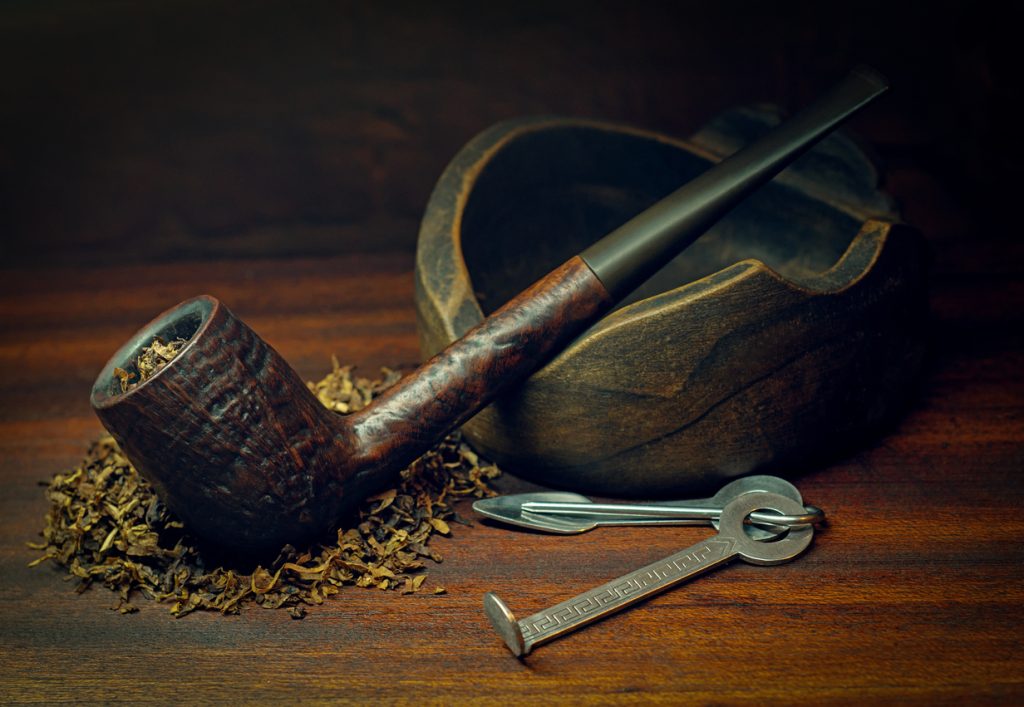
We’ve broken down the pipe cleaning and maintenance process into daily, weekly, and monthly tasks. You should make the daily cleaning part of your routine. We recommend setting a particular day of the week aside for the weekly pipe cleaning session. Monthly tasks can be divided into (a) once-a-month and (b) when-needed monthly tasks.
Before you undertake any pipe cleaning, let the pipe cool down before progressing!
Daily Tasks
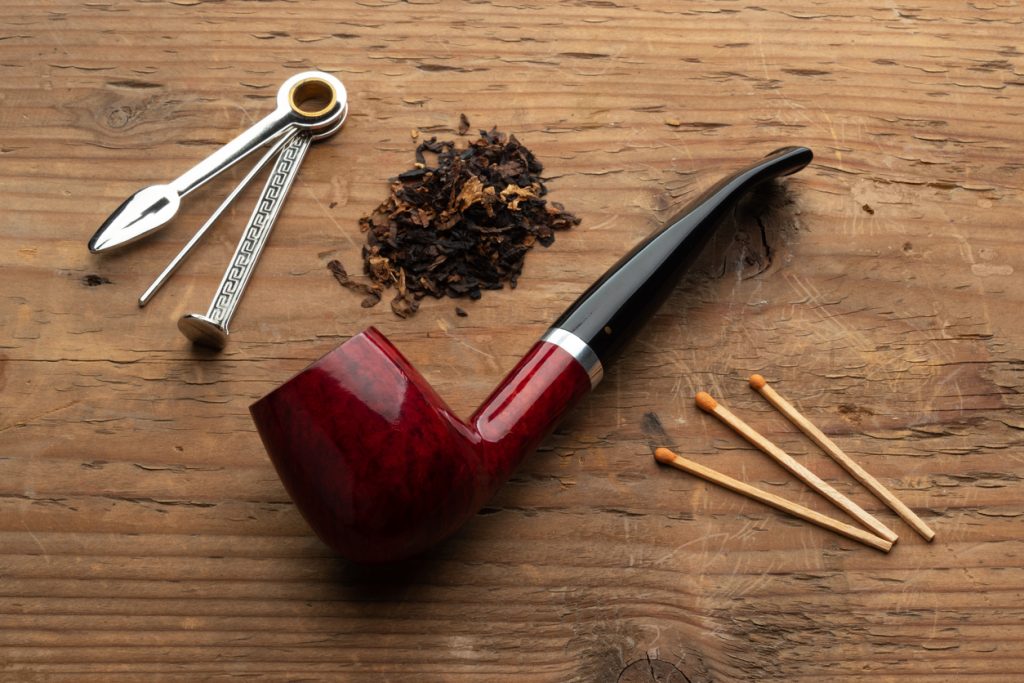
Within this segment of our maintenance guide, we will delve into the fundamental steps of cleaning your tobacco pipe daily. Remarkably, you can achieve this without detaching the shank from the stem, and performing this routine is feasible. At the same time, the pipe is still slightly warm.
Clear Out the Ash: After enjoying your pipe, gently tap it to dislodge any ash. Utilize your pipe tool to scrape away any remaining tobacco carefully. Never tap a hot pipe to dislodge the ash! Ever!
Run a Pipe Cleaner: Insert a soft pipe cleaner through the stem and draught hole to absorb moisture and eliminate residual buildup. For the stem, employ a soft pipe cleaner to ensure gentle cleaning.
Clean the Bowl: Let your pipe down. Employ the pipe tool to scrape off any lingering ash and residue from the bowl. Take care to avoid any potential damage to the pipe’s bowl.
Clean the Rim: You can use a bit of saliva on the tip of your finger to gently rub away any surplus tar from the rim. This practice not only maintains the cleanliness of the rim but also minimizes the necessity for more thorough cleanings down the line.
If you prefer to keep your finger clean, you can wrap it in a cloth, handkerchief, or paper towel before carrying out this task.
Run Another Pipe Cleaner: Employ a dry pipe cleaner to pass through the stem and draught hole, guaranteeing they are completely dry and debris-free.
Weekly Cleaning Tasks
These cleaning tasks must be carried out with a cold pipe.
Cleaning the Rim
For a more thorough cleaning, take a Q-tip and saturate it with either saliva or water. Gently rub the rim of the pipe with the moistened Q-tip. This approach eliminates most tar stains and exposes the wood underneath. If the stains persist, proceed to the section below and proceed with the deep cleaning process.
Attend to the Shank
The shank is the part directly behind the bowl into which the stem fits.
Once you’ve disassembled the pipe, start the cleaning process by using a Q-tip soaked in alcohol to scrub the interior of the mortise (the part that receives and holds the stem’s shank). Next up is the shank. Afterward, run a pipe cleaner through the shank to eliminate residual alcohol and dirt.
To prevent any excess alcohol from spilling onto the rim and potentially harming the finish, consider placing a paper towel inside the bowl.
Clean the Stem
Take an alcohol-soaked bristled pipe cleaner and thread it through the stem from one end to the other. Ensuring you pass the cleaner all the way through prevents debris from being left behind.
The direction you choose to insert the cleaner is a personal choice. Some individuals go from the bit and out of the tenon to prevent a buildup near the lip. Conversely, others find it more convenient to start from the tenon.
You can repeat this step using dry, soft pipe cleaners for thoroughness. This will help eliminate residue and ensure the stem’s interior is adequately dried.
Cleaning and Maintaining the Pipe Bowl
After a few days of pipe smoking, cleaning the bowl to eliminate any accumulated residue thoroughly is advisable.
As per the daily cleaning routine mentioned earlier, gently loosen any particles. Then, take a pipe cleaner, fold it in half, and soak it in alcohol. For this step, opting for liquor instead of rubbing alcohol is recommended. This choice is gentler on the pipe and may add a pleasant flavor for future smoking sessions.
Rub the bowl’s interior with the alcohol-soaked pipe cleaner until it turns completely black. Repeat this process or use a Q-tip for a more in-depth cleanse. However, if strong alcohol is used, be cautious not to touch the bowl’s rim as it could damage the wood’s finish.
If you’re happy with the thickness of the cake inside the bowl, you can conclude the cleaning at this point. However, if you notice the cake becoming too thick or encounter any bitterness or sourness while smoking, consider reaming the bowl using the deep-cleaning method outlined below.
Deep Cleaning: Once a Month
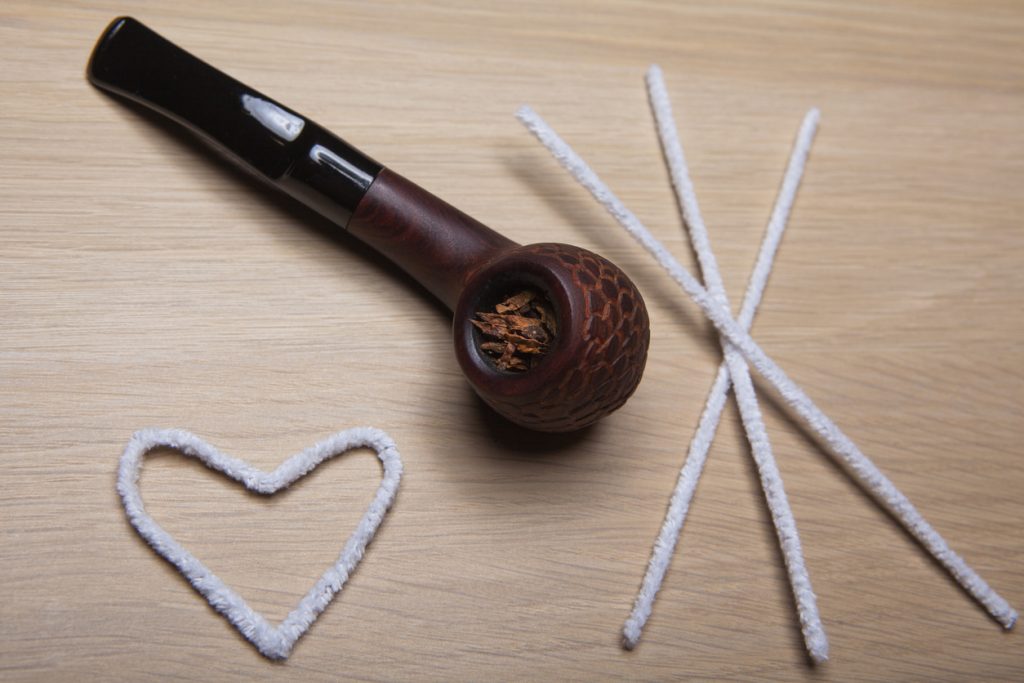
If you diligently follow the maintenance steps and care for your pipe, you might not need to perform this deep cleaning process every month. However, it’s a good idea for regular pipe smokers to clean your pipe occasionally.
The deep cleaning process is more extensive and builds upon the routines we discussed earlier, incorporating a few additional steps. This monthly process will take some time, so make sure you can dedicate enough time. Enjoying a second pipe while you wait to complete this deep clean is also advisable.
Clean and Maintain the Rim
On this occasion, we wouldn’t recommend strong rubbing alcohol for cleaning. The rim is made from the finished wood, so rubbing or grain alcohol could damage it.
Instead, we recommend liquor such as brandy or dark rum for rubbing the rim. As mentioned above, it will be less likely to cause damage and may impart some pleasant flavor onto your pipe.
If you have a particularly thick layer of char that has developed over years of neglect, you should lightly scrape the rim with a dull blade. However, take great care to rub lightly, not damage the finish.
Ream the Bowl Only When Necessary
It should come as no surprise that if you’ve cleaned and maintained your pipe during the daily and weekly cleaning sessions, reaming the bowl should only be used as a last resort.
Using a pipe reamer is quite simple. Insert it into the bowl and gently twist it while applying light pressure. It’s crucial not to exert too much force, as the goal is to remove excess cake without causing damage to the interior of the pipe.
Twist the reamer a few times in a clockwise direction and then do the same in the opposite direction. After this step, empty the residue from the pipe into an ashtray. Repeat the process if necessary.
Once you’ve completed the reaming process and tapped out any loose particles, follow the routine cleaning procedure mentioned earlier by using a pipe cleaner soaked in alcohol to give the pipe’s interior a final cleaning touch.
There’s an additional deep-cleaning step involving salt and alcohol you can undertake after reaming. We’ll cover the process a bit later.
Service the Shank
Start by using a shank brush or a bristled pipe cleaner soaked in alcohol to clean the shank’s interior meticulously. Once you’re content with the cleaning, proceed with a Q-tip soaked in alcohol and a dry pipe cleaner, following the steps described in the earlier routine cleaning process.
To prevent alcohol from dripping out of the bowl and potentially damaging the finish, consider stuffing the bowl with a dry paper towel. This will help absorb any excess liquid and protect the pipe’s exterior.
Clean the Stem
To begin, scrape the interior of the tenon using the metal shank brush that has been soaked in alcohol. Once content with the cleaning, pass a soaked bristled pipe cleaner through the stem, following the earlier routine process.
Over time, older pipe stems made from vulcanite tend to oxidize, resulting in a greenish hue. However, restoring vulcanite pipe stems to their original black color is possible with some elbow grease.
To achieve this, you’ll need to soak the stems in hot water and a substantial amount of Oxi Clean powder. If your stem has any brand markings, it’s advisable to coat those sections with Vaseline to prevent them from fading. Leaving the pipe stems to soak overnight could eliminate traces of oxidation.
If the initial soaking doesn’t fully restore the black color, you can consider using bleach cream generously. Rub the stems with the cream until they regain their black hue. Although this process may take around 30 minutes to show results, persistence is vital and an effective method.
Remember that the stems might lose their shine during this process and become slightly rough. If you have access to a buffing wheel, you can use it to restore the stems’ natural sheen. Alternatively, dedicated rubbing with bleach cream will gradually improve the finish.
After completing the restoration process, a light vaseline or olive oil coating is recommended. This protective layer helps guard the stems against future oxidation.
Cleaning Estate Pipes
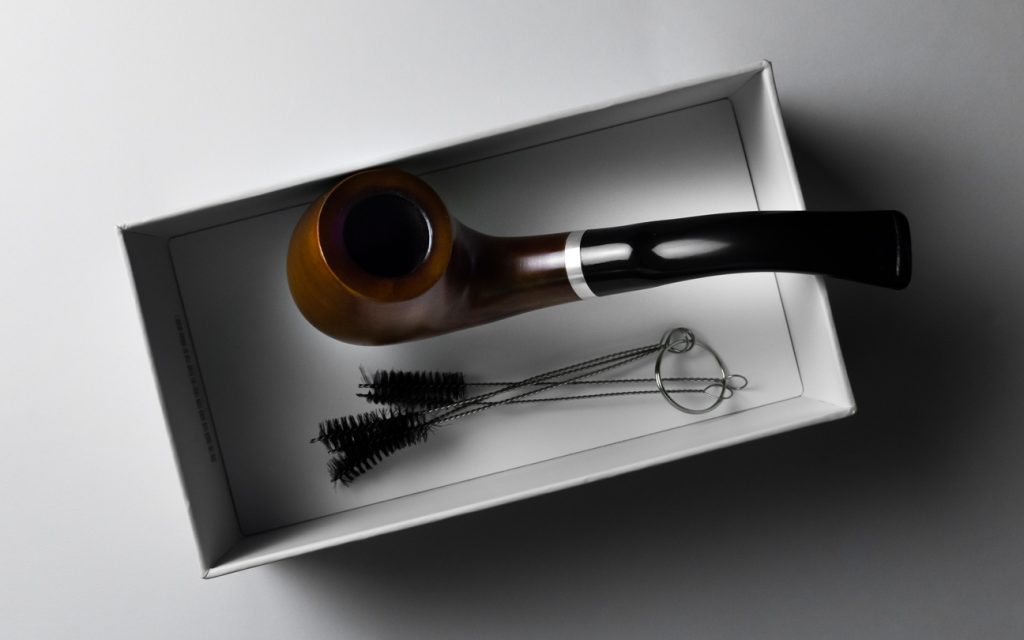
After reaming the bowl, you must give your pipe some TLC. Secondhand pipes are also affectionately known as ‘Estate Pipes.’ You’ll need a salt and alcohol mixture along with your other tools. Let’s dive in!
A widely used technique, particularly for Estate pipes, involves the deep cleansing method of salt and alcohol soaking. This procedure is highly effective for thorough cleaning, especially for older pipes that may have accumulated significant residue over time. Additionally, if you’re changing tobacco preferences, this method can help eliminate lingering flavors from the cake.
Begin by reaming the pipe as previously explained, ensuring it’s as clean as possible to facilitate proper soaking. With the stem removed, block the shank to prevent leakage. A recommended approach is using a cling film-wrapped Q-tip, which proves effective.
Add Salt to the Bowl
Start by filling the bowl with salt. While you can use table salt, kosher or sea salt is preferable due to its ease of removal and coarseness. Fill the bowl below the rim because the salt will expand once alcohol is added. This prevents unnecessary spillage, and you can add more salt later.
Add Alcohol to the Salt
When it comes to alcohol, choose from the options mentioned earlier. For this method, opt for liquor instead of heavy-duty rubbing alcohol. Pour the alcohol into a shot glass to control the volume accurately. Some individuals even use pipettes or syringes for precision.
Add enough alcohol to dampen the salt without fully saturating it, then fill with salt up to the rim. If necessary, add a bit more alcohol to moisten the extra salt. Place the pipe on a stand or an egg carton to prevent toppling during the 24-hour soaking period.
After 24 hours, the solution will have absorbed the tar and residue from the bowl. To clean:
- Scrape out the salt and alcohol using a pipe tool.
- Rinse the bowl with more alcohol, swirling it around using the pipe tool.
- Empty the bowl and wipe the interior with a paper towel, then allow it to dry for another 24 hours.
Maintaining Your Pipe
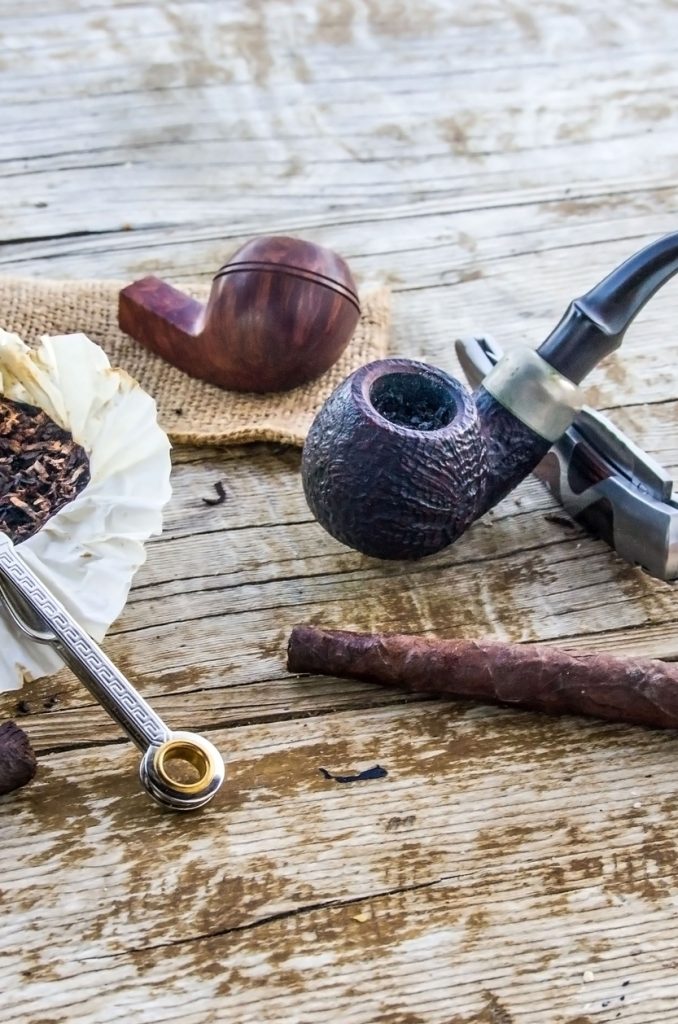
After completing the abovementioned cleaning, it’s crucial to let the pipe air-dry for at least 24 hours before resuming use. Even if you’ve only performed the daily cleaning, having a spare pipe for the following day’s smoking is advisable. This allows proper drying time, especially considering the moisture accumulation during a smoking day.
You can apply olive oil for those seeking to enhance their pipe’s appearance. Gently buff the pipe using a paper towel or cloth and a small amount of olive oil. This imparts a glossy finish and nourishes and maintains the wood’s health.
Here are some more tips:
- Clean After Every Smoke: Cultivate the habit of cleaning your pipe after each smoking session to prevent the accumulation of tar and residue.
- Rotate Pipes: Consider rotating between several pipes if you’re a frequent pipe smoker. This rotation ensures that each pipe receives adequate time to cool and dry between uses.
- Regular Deep Cleaning: Plan for a deep cleaning of your pipe every few weeks, particularly if you’re an occasional smoker.
Conclusion
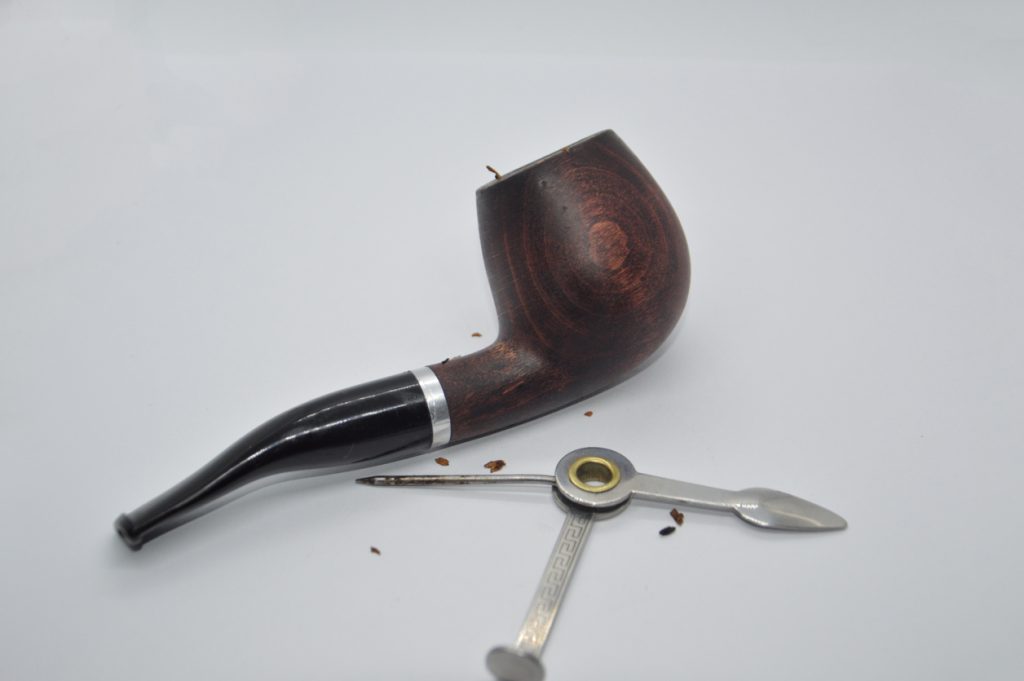
Proper maintenance of a tobacco pipe is crucial for a satisfying smoking experience and the pipe’s longevity. This comprehensive guide outlines step-by-step cleaning processes and tips. The preparation involves avoiding bowl damage, providing ample workspace, and having a disposal for used materials. Necessary supplies include alcohol, cloths, pipe cleaners, Q-Tips, a reamer, and a shot glass.
After any cleaning process, allowing the pipe to dry for 24 hours is vital. Having a spare pipe for rotation is recommended. Adding a touch of olive oil can enhance the pipe’s appearance. Consistent cleaning, rotating pipes, and regular deep cleaning are essential practices for pipe maintenance.
By following these guidelines, one can ensure an enjoyable smoking experience and prolong the life of one’s tobacco pipe. Happy Smoking!

